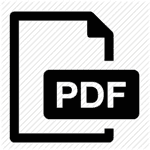The latest elevator technology across Australia

Technology
All our passenger lift lines include the latest in elevator technology and can be powered with either machine room-less (MRL) electric traction or hydraulic drive systems.
MRL electric
The MRL electric is our most popular machine type. MRLs allow for higher speed, excellent noise minimisation and reduced shaft sizes. With the motor placed at the top of the shaft, there is no need for an external machine room.
Hydraulic
Hydraulic lifts are the ideal solution for buildings of reduced height and low to medium traffic. If you are refurbishing or upgrading a building without an existing lift, this is the perfect elevator to choose.
Electronic controller
Electronic controllers are the brains of our lifts. Our controller is designed with the latest in electronic elevator technology, delivering outstanding performance in all situations. It includes a frequency changer designed by MP with Digital Signal Processing technology. Our electronic controllers deliver superior ride performance while maintaining the highest standards of safety and efficiency.
Energy efficiency
At Forte Lift Services, we believe in the conservation of our planet, so we take our role in environmentally sustainable production and usage of lift services very seriously. Energy efficiency is at the heart of all our products, and we ensure that all of our products and services provide you with the cost-saving benefits to your power bill.


Our contribution to energy efficient buildings
Our products include:
- Highly efficient traction technology, both electromechanical (permanent magnet gearless traction) and hydraulic (electronic valves, 3VF motors and nominal speed adjustment depending on the cabin load) that minimises energy consumption when the lift is in motion
- Intelligent timed lighting thanks to LED technology that brings a saving of up to 58% of the total energy consumption
- Energy management when the lift is not in use
- Optional MP standby system that reduces energy bills by up to 12%
- The possibility to install power regeneration systems when technically and economically viable. In the most optimal of cases, up to 65% of the energy used can be regenerated


















